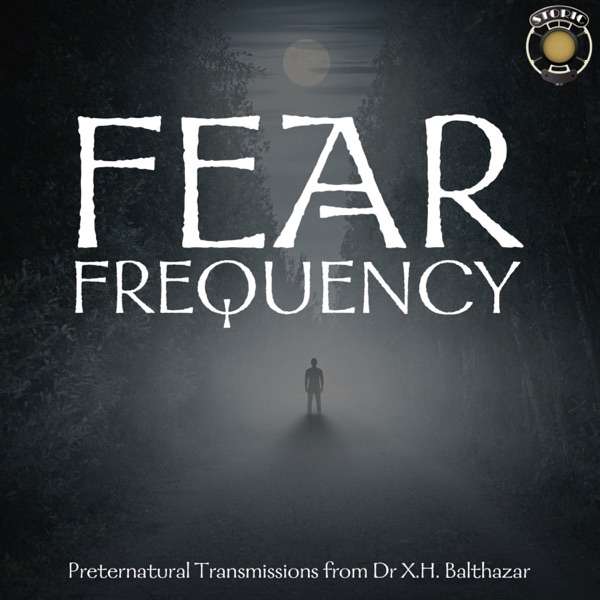Welcome to Mysteries to Die For.
I am Shannon Leahy and am here with Jack, the piano player and producer. This is a podcast where we combine storytelling with original music to put you at the heart of mystery, murder, and mayhem. Some episodes will be my own stories, others will be classics that helped shape the mystery genre we know today. These are arrangements, which means instead of word-for-word readings, you get a performance meant to be heard. Jack and I perform these live, front to back, no breaks, no fakes, no retakes (unless it's really bad). This episode will be read by me, Shannon Leahy,
This is Season 2. This season contains adaptations of stories published in the 1800s. These stories are some of the first considered to be mysteries. For that reason, this season is called The Originators.
Today’s story is about perceptions and realities. This is the Episode 11 Natural Causes, an adaptation of The Notting Hill Mystery by Charles Felix.
Shannon: This story contains several settings but the only one specifically named is the one in the original title, Notting Hill. Notting Hill is a neighborhood in London that is trendy and fashionable with a distinctive, small-village feel, according to TripAdvisor. It is famous for its market where vendors sell everything from fruit and veggies to antiques. This area is also a center for entertainment with several theatres for live shows and cinemas. The area has nearly 2,900 reviews with a rating of 4.5 and is ranked #142 of 2,359 things to do in London. Not too shabby. While only 11 miles from the Greenwich Observatory and the prime meridian, it will take about 45 minutes to drive there. That’s how you know you’re in a big city. Here in our corner of Indiana, 11 miles takes you 20 minutes, if your route has traffic lights.
The Notting Hill Mystery was written by Charles Felix and released in an 8-part serial in magazine called Once a Week beginning in November 1862. It was released as a novel in 1865. On Goodreads, The Notting Hill Mystery has 605 ratings with an average of 3.21.
Let’s take a look at a few reviews…
Here’s a 4-star rating: Good grief -- this book might possibly win the award for most convoluted murder mystery I've ever read, but it's definitely and seriously fun. It's definitely got a thin plot, but it rates high on my enjoyment-o-meter because of its diabolical craziness and downright crazy story elements.
Here's a 3 star rating: A good example of procedural investigation presented to the reader in epistolary style. The language was typically wordy and appropriate to the Victorian era it is set in. While much of the story was quite repetitive - gather statements, compare, report evidence - this is how a case is built, and even though the culprit was reasonably clear from the beginning, I did enjoy reading The Notting Hill Mystery. [epistolary: adj, a literary work in the form of letters)]
Here's a 1 star: "A tough read" I can appreciate the work needed to construct a book like this, but it's not a riveting read when you have to unscramble the Victorian script. In fact, I'm not even sure it was a story, just a series of statements tacked together. Not my cup of tea.
It's funny when you can read several reviews with totally different ratings and agree with them all. Jack, tell us a little about our author of the day.
Jack: The Notting Hill Mystery was written by Charles Felix…or was it? This story and another called Velvet Lawn were credited to Charles Felix and published by Sanders, Otley, & Company. A 1864 column of The Manchester Times put it out there that Charles Felix was actually Charles Warren Adams. Adams was the attorney for the publishing house and eventually took over management when Sanders and Otley died. Adams never admitted to being Charles Felix, at least not publically. His wife and friends probably knew. A few academics got curious about this mystery and dug into the writing. In 1952 and then again in 2011, two separate people came to the conclusion that Charles Warren Adams was Charles Felix. Adams, who’d been dead for almost 50 years, neither confirmed nor denied the result.
So, who was Charles Warren Adams? He was an English lawyer born in 1833. He was married twice. He married his first wife, Georgina, in 1861. She died in 1880. He then met Mildred Coleridge, who was the daughter the Lord Chief Justice. Mildred’s family didn’t approve of the couple and court actions followed, which Adams won. Charles and Mildred married in 1885. Charles died in 1903, Mildred in 1929.
There wasn’t any information on if he had children or anything more about his legal practice. He worked as the representative of the publishing firm while the founders were alive, so he probably did the same for other businesses. Charles and his wives were animal activists. As an anti-vivisectionist, they were especially active in stopping practices of testing on animal.
Here’s another word of the day: vivisection - surgery conducted for experimental purposes on a living organism, typically animals with a central nervous system, to view living internal structure.
Shannon: We are nearly ready to begin our story. While Jack resets his microphone and warms up his fingers, I’ll explain why are we doing adaptations of these early stories instead of performing them as written. Two main reasons. The language from the 1800s is hard and can be difficult to understand with our modern ear. The speech cadence is just different.
Second, the style and length of the stories were not created for listening. With these adaptations, we keep the heart of the story, preserving the ground- breaking narrative, but update the packaging for easier digestion.
And so we are ready for Natural Causes. Jack, if you will, take us in.
Episode Materials
There are several places where you can find the original. Gutenberg is one of them. https://www.gutenberg.org/ebooks/46153
Cast of characters
Ralph Henderson, Insurance Investigator / Detective
Baroness Rosalie Rickhart, the body, aka Charlotte “Lotte” Brown
Baron Rickhardt, the husband and #1 suspect
Mrs. Gertude Boleton Anderton, another body, sickly woman being treated by the Baron
Mr. William Anderton, yup, another body, hired the Baron to cure his wife
Julia Clark, witness, lived with Rosalie in a circus when they were girls
Mr. Rodgers, Owner of the circus
John Pettigrew, witness, butler to the Anderton’s
Catherine Boleton, Gertrude’s twin sister, abducted at age 5
Reginald Boleton, great uncle to Gertrude and Catherine, left an inheritance
Mrs. Elstan, landlady of a house in Notting Hill where the Baroness died.
Joseph Aldrich, witness, lived on first floor, under the Rickhardts
My two cents
Tina's two cents: Let’s talk about this story. Does the logic work? No. Hell no, it doesn’t. Writing this adaptation drove me a little crazy because there is a fundamental logic flaw in the original story. The original story is told through a large number of written testimonies and journal excepts, as the reviews hinted to. We do not see any events happen in real time but have to piece together a story that tells about the lives of both Gertrude Anderton and the Baroness Rosalie simultaneously. We do not hear from the Baron directly and we do not know what the final result is.
Remember this story was originally released in eight parts, so the reader had to put the story together. This wasn’t so different from Quinten Tarantino’s Pulp Fiction and other films. But when you put the parts together, it still has to make sense.
Let’s start backwards…
Premise #1 is the Baron mesmerized his wife into drinking poison to simulate an elusive illness that would eventually kill her. Why? To claim the 25,000 pounds in insurance money. Does it work? Sure, if you are willing to buy hypnosis as the murder weapon. It seems weak to me as hypnosis relies on a willing subject. Rosalie is described as afraid of her husband. It is hard to buy that she was not guarded around him.
If the story would have stopped there, it would have been a decent mystery, contrived, but decent.
But there was premise #2, the Baron mesmerized William Anderton to kill his wife, and then himself, meaning the Baron alone could claim the inheritance. When our Mr. Henderson is investigating, Rosalie, Gertrude, and William are all dead, which means they didn’t testify.
Accepting this motivation requires the belief that the Baron’s thought he could claim Rosalie was the lost Catherine Boleton after she died.
This is another the problem is for me.
The structure of the story strongly implies that Rosalie is Catherine, but there is no proof. Rosalie didn’t know. The man who bought her from her parents didn’t know who she was. So…how did the Baron know? He couldn’t.
Gertrude and Catherine were twins but not described as identical. Still, when the two Gertrude and Rosalie meet, there is no “funny, you look just like me” moment. They didn’t know they were related.
There is no testimony of Rosalie using Catherine’s name, such as when they were married. You would think, if this were a con, the Baron and his wife would have pressed his case on this inheritance after Gertrude and William died. A living Catherine would have a better chance of claiming an inheritance where all other family members are dead. Once she died, his ability to prove her pedigree was reduced to rhetoric.
What do you think Rosalie, Gertrude, and William died of? My thoughts – Rosalie and Gertrude did of chronic poisoning of antimony, the ingredient used as a laxative, as both women has pain stomach issues. I think William overdosed on something else, something that took him out quietly, with one dose, like a narcotic.
This story had a good premise – the murder of the Baroness and insurance fraud. In my opinion, it should have stayed there. Stretching into this twin kidnapping, murder / suicide, and unclaimed inheritance created a lot of holes that the reader either had to ignore, fill in the blanks themselves, or, like me, getting really irritated by.
The story did not have the actual ending and the points against the Baron were easily refuted. In this adaptation, I gave him a chance to take the stand. If I were to extrapolated the story out, I think the Baron was paid out the 25,000 pounds but was not able to satisfy the case for the inheritance. He was not arrested for any of the deaths because there was only circumstantial evidence. It’s up to you to decide if he got away with murder.
After the Story
That wraps this episode of Mysteries to Die For. Support our show by subscribing, telling a mystery lover about us, and giving us a five-star review. Become a member of our Body Bag Brigade by financially supporting this season with a one-time donation. Pay what you can.
Information is in the show notes and on our website TGWolff.com/Podcast. DONATE HERE
Mysteries to Die For is written by TG Wolff with contribution from Jack Wolff. Natural Causes was written by TG Wolff, adapted from The Notting Hill Mystery by Charles Felix, otherwise known as Charles Warren Adams. Music and production and by Jack Wolff. Episode art is by Shannon Leahy. That wraps up Season 2. We are going to take a short break before we launch into Season 3 Enter the Detective. Remember to subscribe!

 Our TOPPODCAST Picks
Our TOPPODCAST Picks  Stay Connected
Stay Connected







